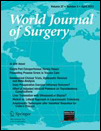Liberian Surgical and Anesthesia Infrastructure: A Survey of County Hospitals
Abstract
Background
There is a significant burden of disease in low-income countries that can benefit from surgical intervention. The goal of this survey was to evaluate the current ability of the Liberian health care system to provide safe surgical care and to identify unmet needs in regard to trained personnel, equipment, infrastructure, and outcomes measurement.
Methods
A comprehensive survey tool was developed to assess physical infrastructure of operative facilities, education and training for surgical and anesthesia providers, equipment and medications, and the capacity of the surgical system to collect and evaluate surgical outcomes at district-level hospitals in Africa. This tool was implemented in a sampling of 11 county hospitals in Liberia (January 2011). Data were obtained from the Ministry of Health and by direct government-affiliated hospital site visits.
Results
The total catchment area of the 11 hospitals surveyed was 2,313,429—equivalent to roughly 67 % of the population of Liberia (3,476,608). There were 13 major operating rooms and 34 (1.5 per 100,000 population) physicians delivering surgical, obstetric, or anesthesia care including 2 (0.1 per 100,000 population) who had completed formal postgraduate training programs in these specialty areas. The total number of surgical cases for 2010 was 7,654, with approximately 43 % of them being elective procedures. Among the facilities that tracked outcomes in 2010, a total of 11 intraoperative deaths (145 per 100,000 operative cases) were recorded for 2009. The 30-day postoperative mortality at hospitals providing data was 44 (1,359 per 100,000 operative cases). Metrics were also used to evaluate surgical output, safety of anesthesia, and the burden of obstetric disease.
Conclusions
A significant volume of surgical care is being delivered at county hospitals throughout Liberia. The density and quality of appropriately trained personnel and infrastructure remain critically low. There is strong evidence for continued development of emergency and essential surgical services, as well as improved surgical outcomes tracking, at county hospitals in Liberia. These results serve to inform the international community and donors of the ongoing global surgical and anesthesia crisis.




